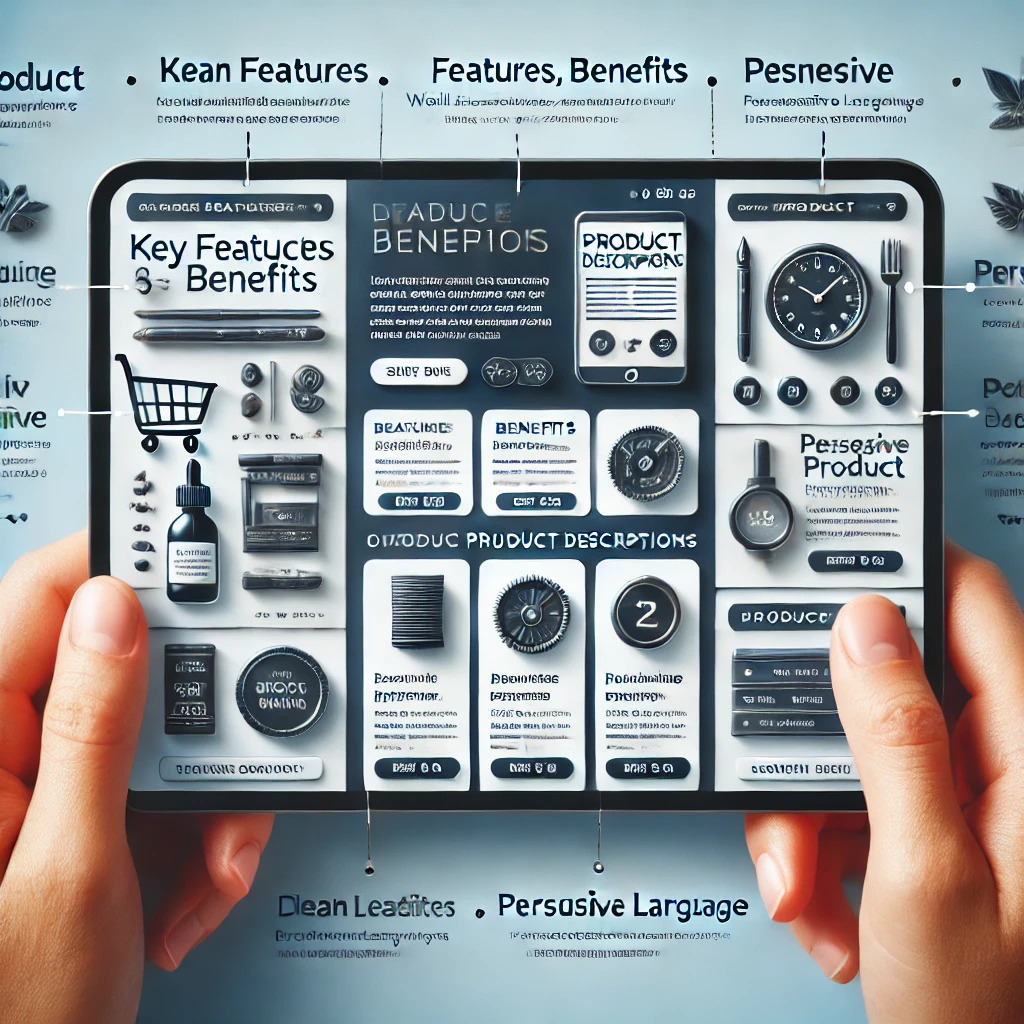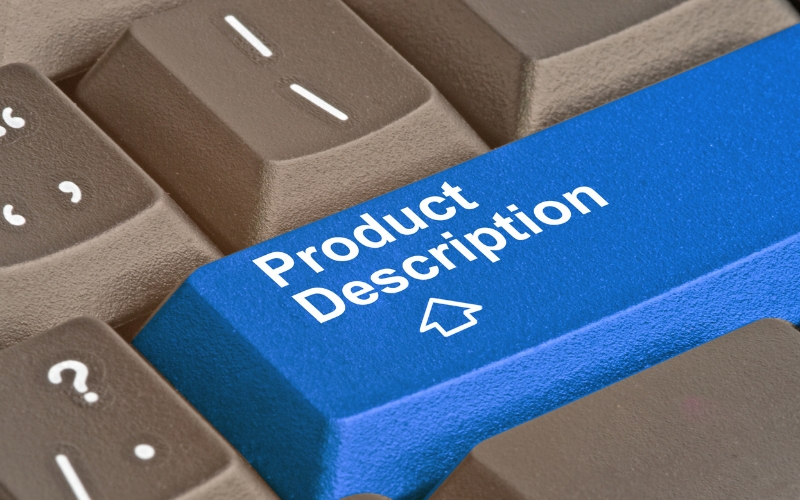
Creating effective product descriptions is an essential aspect of e-commerce success. It’s not enough to simply list a product’s features; you must also understand your audience’s specific needs, desires, and pain points to craft descriptions that resonate with them. By tailoring your descriptions to match the preferences and buying behaviors of your target market, you can increase engagement and drive higher conversion rates. This approach ensures that your product descriptions are not only informative but also persuasive and effective in encouraging sales.
Understanding Your Audience: Tailoring Product Descriptions for Maximum Impact

Creating effective product descriptions starts with a deep understanding of your target audience. To write descriptions that resonate, it’s crucial to know who your customers are, what problems they face, and how your product can help solve those problems. Tailoring your descriptions to your audience’s pain points, desires, and behaviors will significantly increase their relevance and, in turn, drive conversions.
The first step in writing effective product descriptions is identifying the specific needs and challenges of your target customers. Are they looking for convenience, luxury, affordability, or something else? Understanding these needs allows you to frame your product’s benefits in a way that directly addresses the customer’s core concerns. For instance, if you sell kitchen appliances, focusing on how a product can save time or make cooking easier will appeal to busy individuals who value efficiency. On the other hand, highlighting the product’s premium features and design will resonate with consumers who prioritize quality and luxury.
Another critical aspect of audience understanding is recognizing their buying behaviors. Are your customers typically impulse buyers, or do they take time to research before purchasing? If your audience is inclined toward making quick decisions, your effective product descriptions should be clear, concise, and focused on the key selling points that trigger immediate action. Conversely, if your customers are more methodical, they may appreciate more detailed descriptions that provide additional product specifications, customer reviews, and use cases.
Additionally, knowing your customer’s values and emotions can help you craft descriptions that evoke a connection. Whether it’s making a practical case for how your product meets their needs or speaking to a lifestyle aspiration, aligning your descriptions with the customer’s values can make them feel understood and confident in their purchase decision. For example, a product description for eco-friendly items should emphasize sustainability, which aligns with the values of customers who prioritize environmental impact.
Lastly, consider the tone and language of your effective product descriptions. Use language that reflects your customer’s voice. Whether it’s casual, technical, or professional, matching the tone of your audience can make your descriptions feel more personal and engaging.
The Power of Persuasive Language: Using Words that Sell

When it comes to crafting effective product descriptions, the power of persuasive language cannot be overstated. Words have the ability to evoke emotions, create urgency, and highlight the benefits that compel customers to make a purchase. Understanding the psychology behind persuasive language is key to writing descriptions that not only inform but also inspire action.
The first step in writing effective product descriptions with persuasive language is to focus on the benefits rather than just the features. While listing technical specifications is important, customers are ultimately more interested in how a product will improve their lives. Instead of saying, “This blender has a 500-watt motor,” highlight the benefit: “Blend smoothies, soups, and shakes with ease in seconds, saving you valuable time each morning.” By focusing on the outcome that the customer will experience, you create a stronger emotional connection.
Next, use language that taps into your audience’s emotions. Emotional appeals in effective product descriptions can trigger a sense of desire or even urgency. For example, words like “exclusive,” “limited-time,” or “special offer” create a sense of scarcity and can motivate customers to act quickly. This is especially true when you emphasize urgency: “Order now before our limited stock runs out.” These phrases push customers to take immediate action, fearing they might miss out on a great deal.
Another powerful tool in persuasive writing is the use of action-oriented words. Phrases like “transform your life,” “unlock your potential,” or “experience ultimate comfort” invite the customer to envision how the product will fit into their daily routine or improve their lifestyle. Action verbs activate the customer’s imagination, making them more likely to picture themselves using the product and reaping its rewards.
Additionally, creating a sense of exclusivity in your effective product descriptions can significantly enhance appeal. Phrases like “only available here” or “be the first to experience” not only add value to the product but also make the customer feel like they’re part of an exclusive group. This exclusivity can elevate the perception of the product, making it seem more desirable and premium.
Incorporating Key Features and Benefits: A Balanced Approach

One of the critical components of effective product descriptions is striking the right balance between listing key product features and showcasing the benefits these features bring to the customer. While features provide the technical details, benefits highlight how these features solve problems or enhance the customer’s life, making it essential to present both in a way that’s compelling and clear.
When crafting effective product descriptions, start by focusing on the most important features that differentiate your product from others. These could include size, material, color, or unique functionalities. For example, if you’re selling a high-end vacuum cleaner, you might list features such as “powerful 1200-watt motor,” “HEPA filtration,” or “lightweight design.” However, simply listing features without context won’t compel potential buyers to make a purchase. That’s where the benefits come into play.
Each feature should be followed by a clear explanation of how it benefits the customer. This step is key to transforming a list of technical specifications into an emotional or practical appeal. For instance, the powerful motor in the vacuum cleaner translates to the benefit of “providing deeper and more thorough cleaning, removing dirt from even the most challenging carpet fibers.” The HEPA filtration feature can be explained as “capturing up to 99.9% of allergens and dust, making it ideal for allergy sufferers.” By focusing on the direct benefits, you show the customer how the product improves their life.
The key to effective product descriptions is not just listing every single feature, but choosing the ones that matter most to your target audience and connecting them to tangible benefits. This approach ensures that the customer understands the value of the product, not just the specifications. For example, if you’re selling a kitchen blender with multiple speed settings, you might emphasize how the different speeds allow users to “achieve the perfect consistency for smoothies, soups, and sauces every time.”
Moreover, while it’s important to highlight the practical benefits, don’t overlook the emotional ones. Sometimes, a feature might speak to a deeper emotional benefit, such as a product’s design or its convenience. For example, a stylish coffee maker not only brews great coffee but also “adds a touch of elegance to your kitchen, making your morning routine more enjoyable.”
Optimizing for SEO: How to Make Your Product Descriptions Discoverable

Writing effective product descriptions isn’t just about creating compelling, persuasive content—it’s also about making sure that content is discoverable by search engines. SEO (Search Engine Optimization) is crucial for ensuring that your product descriptions show up in relevant search results, ultimately driving organic traffic to your site. There are several best practices for optimizing your product descriptions to improve visibility and attract the right audience.
The first step in effective product descriptions for SEO is keyword integration. Research the most relevant keywords for your product and integrate them naturally into your descriptions. Start by including primary keywords in the title, early in the description, and throughout the content. For example, if you sell eco-friendly yoga mats, include keywords like “eco-friendly yoga mat,” “sustainable yoga mat,” and “best yoga mat for eco-conscious consumers.” However, avoid keyword stuffing, as search engines can penalize content that feels unnatural or over-optimized. Instead, focus on writing content that is engaging and useful to the reader while naturally incorporating keywords where they fit.
In addition to keyword integration, meta descriptions are an essential part of SEO optimization. A well-written meta description summarizes your product in a way that entices potential customers to click on your listing when they see it in search engine results. An effective product description will include a concise, keyword-rich meta description of about 150-160 characters that highlights the main benefits of the product. For instance, a meta description for an eco-friendly yoga mat might read, “Shop our eco-friendly yoga mat, made from sustainable materials for a comfortable, non-toxic workout. Perfect for yoga enthusiasts!”
Alt text for images is another important aspect of effective product descriptions for SEO. Search engines can’t “see” images, but they can read the alt text, which is a text description of an image. Including relevant keywords in the alt text not only helps improve SEO but also enhances accessibility for users with visual impairments. For example, instead of labeling an image as “yoga mat.jpg,” you could label it as “eco-friendly-yoga-mat.jpg” to reinforce the product’s key features and boost its searchability.
Lastly, consider the overall structure of your product description. Organize it in a way that’s easy to read, with headings, bullet points, and short paragraphs. This not only makes your content more user-friendly but also helps search engines better understand the structure of your page, which can improve rankings.
Formatting and Structure: Making Product Descriptions Easy to Read and Engaging

When it comes to writing effective product descriptions, the structure and formatting play a significant role in keeping your customers engaged. Even the most compelling content can be overlooked if it’s difficult to read or poorly organized. Clear headings, bullet points, and concise sentences help make your product descriptions more accessible, improving both user experience and SEO performance.
Start by using clear and engaging headings in your effective product descriptions. Headings guide the reader’s eyes and provide a roadmap of the key information they’ll find on the page. By using headings that highlight the most important aspects of the product—such as “Key Features,” “Benefits,” or “Customer Reviews”—you allow potential customers to easily find the information that matters most to them. These headings break the text into digestible sections, which makes the description less overwhelming and more user-friendly.
Bullet points are another invaluable tool for enhancing readability and creating effective product descriptions. Bullet points allow you to list features, benefits, or key specifications in a clear, organized format. Customers often scan product descriptions rather than reading them word-for-word, so bullet points make it easier for them to pick out relevant information quickly. For example, instead of writing a long paragraph about a product’s features, you could create a bullet-point list like this:
- Lightweight design for easy portability
- High-quality, durable materials for long-lasting use
- Adjustable settings to customize to your preferences
- Eco-friendly packaging for sustainability
This format not only enhances readability but also helps highlight the most important features in a way that’s easy to understand at a glance.
Concise sentences are essential for keeping effective product descriptions focused and engaging. In a world where attention spans are shorter than ever, getting to the point quickly is key. Avoid long, winding sentences that can confuse or bore the reader. Instead, use simple, straightforward language that clearly conveys the product’s value. Focus on making every sentence count, ensuring that each one adds something meaningful to the description. For example, rather than saying, “This blender is designed in such a way that it allows you to prepare smoothies with ease and convenience,” simply say, “Blend smoothies in seconds with ease.”
Conclusion
Creating effective product descriptions is crucial, but it’s equally important to understand the broader landscape of e-commerce optimization. For instance, optimizing your product pages for search engines can significantly increase visibility and drive more traffic to your site. A great resource for learning about the best SEO practices for product descriptions is Moz’s Beginner’s Guide to SEO, which provides comprehensive insights into keyword research, on-page SEO, and much more. By combining effective product descriptions with SEO strategies, you can maximize your product’s potential to rank higher in search engine results and attract more customers.
In conclusion, writing effective product descriptions goes far beyond technical specifications; it requires a strategic blend of understanding your audience, showcasing product benefits, and leveraging persuasive language. By aligning your descriptions with your customers’ needs and optimizing them for both readability and search engines, you create a seamless shopping experience that attracts and retains buyers. Investing time in perfecting your product descriptions can significantly enhance your brand’s visibility, credibility, and ultimately, sales performance.
For more details or to discuss your specific SEO requirements, visit our Onsite SEO Services page.

